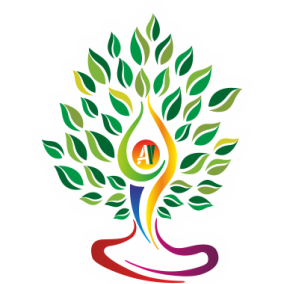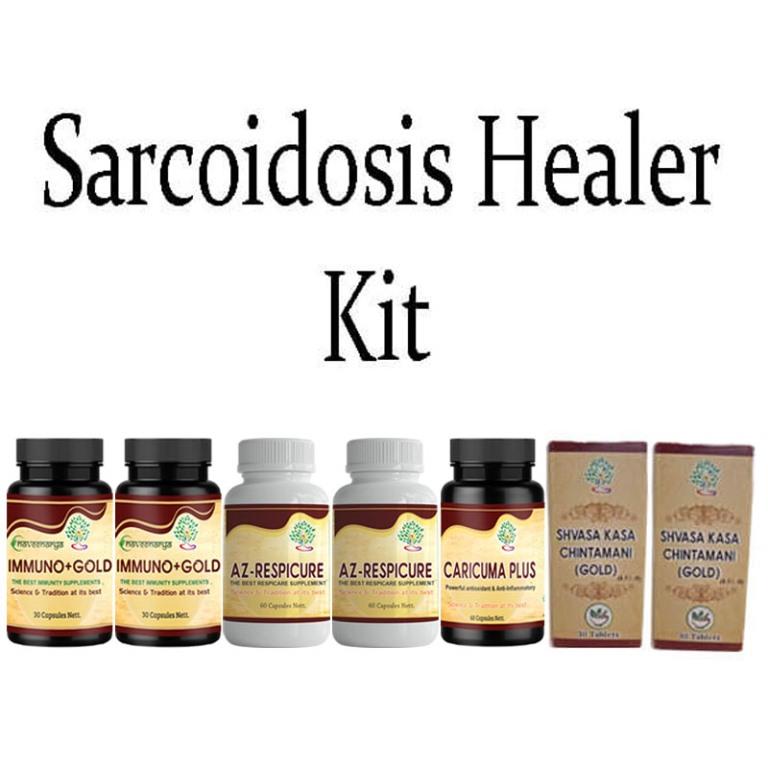Sarcoidosis
- Home
- Sarcoidosis
What is Sarcoidosis
Sarcoidosis is a disease that is characterized by the growth of tiny collections of inflammatory cells known as granulomas, in any part of the body but is commonly found in the lungs and lymph nodes. In people with sarcoidosis, abnormal masses or nodules consisting of inflamed tissues form in certain organs of the body. These granulomas may alter the normal structure and possibly the function of the affected organ(s). It can also affect the eyes, skin, heart and other organs.
Causes
The exact cause of sarcoidosis is unknown, but experts think it results from the body’s immune system responding to an unknown substance. Some other causes can be infectious agents, chemicals, dust and a potential abnormal reaction to the body’s own proteins could be responsible for the formation of granulomas in people who are genetically predisposed. It may also be a type of autoimmune disease which is associated with an abnormal immune response, but what triggers this response is still uncertain
Symptoms
Signs and symptoms of sarcoidosis depend upon which organ or organs are affected. Sarcoidosis sometimes develops gradually and produces symptoms that last for years. Other times, symptoms appear suddenly and then disappear just as quickly. Many people with sarcoidosis have no symptoms, so the disease may be discovered only when a chest X-ray is done any reason. General symptoms that are observed in these patients can be:
- Fatigue
- Swollen lymph nodes
- Weight loss
- Pain and swelling in joints, such as the ankles
- Lung symptoms: Sarcoidosis most often affects the lungs and may cause lung problems, such as:
- Persistent dry cough
- Shortness of breath
- Wheezing
- Chest pain
- Skin symptoms: Sarcoidosis may cause skin problems, which may include:
- A rash of red or reddish-purple bumps, usually located on the shins or ankles, which may be warm and tender to the touch
- Disfiguring sores (lesions) on the nose, cheeks and ears
- Areas of skin that are darker or lighter in color
- Growths under the skin (nodules), particularly around scars or tattoos
- Eye symptoms: Sarcoidosis can affect the eyes without causing any symptoms, so it’s important to have your eyes checked regularly. When eye signs and symptoms do occur, they may include:
- Blurred vision
- Eye pain
- Burning, itching or dry eyes
- Severe redness
- Sensitivity to light
- Heart symptoms: Signs and symptoms related to cardiac sarcoidosis may include:
- Chest pain
- Shortness of breath (dyspnea)
- Fainting (syncope)
- Fatigue
- Irregular heartbeats (arrhythmias)
- Rapid or fluttering heart beat (palpitations)
- Swelling caused by excess fluid (edema)
- Lymph nodes symptoms: Signs and symptoms related to lymph noded may include:
- Tender reddish bumps or patches on the skin.
- Red and teary eyes or blurred vision.
- Swollen and painful joints.
- Enlarged and tender lymph glands in the neck, armpits, and groin.
- Enlarged lymph glands in the chest and around the lungs.
- Hoarse voice.
- Liver/spleen enlargement: Symptoms occur in about 20% of patients affected by liver sarcoidosis. These symptoms include:
- Abdominal pain
- Itchy skin
- Fever
- Weight loss
- Hepatomegaly (enlargement of the liver, present in up to 20% of patients)
- Jaundice (yellow skin, present in less than 5% patients)
Risk factors
The factors that may increase the risk of getting affected by this disease include:
- Sarcoidosis can occur at any age, but often occurs between the ages of 20 and 60 years.
- Women are slightly more likely to develop the disease.
- If someone in the family has had sarcoidosis, then you’re more likely to develop the disease.
Diagnosis
Sarcoidosis can be difficult to diagnose because the disease often produces very few signs and symptoms in its early stages. When symptoms do occur, they may mimic those of other disorders. To diagnose the disease the doctor will likely start with a physical exam and discuss your symptoms. He or she will examine carefully your heart and lungs, check your lymph nodes for swelling, and examine any skin lesions. Some of the diagnostic tests can help exclude other disorders and determine what body systems may be affected by sarcoidosis. The doctor may recommend tests such as:
- Blood and urine tests to assess your overall health and how well your kidneys and liver are functioning
- Chest X-ray to check your lungs and heart
- Computerized tomography (CT) scan of the chest to check your lungs
- Lung (pulmonary) function tests to measure lung volume and how much oxygen your lungs deliver to your blood
- Electrocardiogram (ECG or EKG) to detect heart problems and monitor the heart’s status
- Eye exam to check for vision problems that may be caused by sarcoidosis
- Positron emission tomography (PET) scan or magnetic resonance imaging (MRI) if sarcoidosis seems to be affecting your heart or central nervous system
Other tests may be added, if needed like Biopsies in which the doctor may order a small sample of tissue (biopsy) be taken from a part of your body believed to be affected by sarcoidosis to look for the granulomas commonly seen with the condition. For example, biopsies can be taken from your skin if you have skin lesions and from the lungs and lymph nodes if needed.
Treatment through Ayurveda
Ayurveda, an ancient medical science comprising of two words Ayur + Veda which means the science of life. This system of medication is more than 5000 years old and is not only been used in India but now has reached other countries as well. It is also known as “Mother of all healing.”The whole study of Ayurveda is based on three doshas in our body which are Vata, Pitta and Kapha, whenever there is any imbalance found in these three, it may lead to many diseases.
Scleroderma is a rare autoimmune ailment of unknown etiology, which is often characterized by fibrosis of skin with the involvement of internal organs. In Ayurveda, this disease is considered under the heading ‘Uttana Vatarakta’. Ayurvedic treatment allows the condition based on Dosha, Dhatu and Dushya. Scleroderma is a progressive disorder and there is a myth that it is non-curable, which is completely wrong. Clinical treatment with Ayurvedic medications can slow down its rapid progression as well as improve the life span of the patient and quality of life.
There are various ayurvedic herbs that can be used as natural treatment to get relieve from the symptom s of the disease and also helps in control of its progress. The name of few herbs are:
- Ashwagandha: It helps reducing the cough and breathing difficulties by controlling the inflammation in the airways and lungs.
- Neem: The use of neem helps in reducing the symptoms of the disease effecting skin. It regulates the immune system and prevent inflammation in the healthy tissues which results in providing relief from this disease.
- Arjuna: It is used to prevent the complications associated with heart and also provides prevention from arrhythmiac and also reduces the risk of heart attacks.
- Giloy: This herb stimulates the regeneration of the affected tissues and preserves the functions of the organs.
There are various detoxifying therapies in Panchkarma which is also an another external way of treatment in Ayurveda. These therapies include:
- Vamanam
- Virechanam
- Vasthy
- Elakizhi
- Podikizhi
- Lepam
Other relaxing therapies in Ayurveda for this disease are:
- Abhyangam
- Sirodhara
$320.39
Sale


